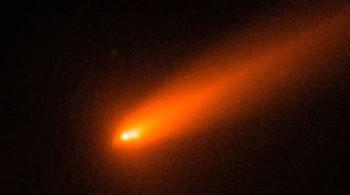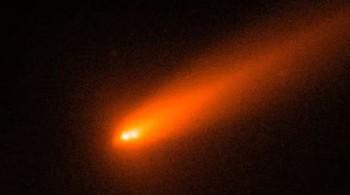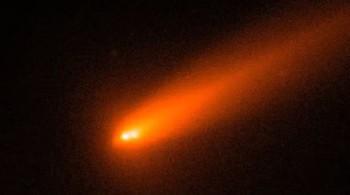
Comet C/2025 K1 (ATLAS) breaks into 3 after coming close to Sun
The fascinating world of astronomy has witnessed another remarkable event, as Comet C/2025 K1 (ATLAS) has broken into three pieces after swinging too close to the Sun. This extraordinary occurrence has left scientists and astronomers in awe, and the stunning images captured by Italy’s Copernicus telescope have provided a unique glimpse into the comet’s dramatic transformation.
According to reports, Comet C/2025 K1 (ATLAS) passed close to the Sun on October 8, and this proximity to the Sun’s intense heat and radiation caused the comet’s nucleus to become unstable. As a result, the comet broke into three distinct pieces, with two large chunks drifting approximately 2,000 km apart from each other. A smaller third piece was also visible, positioned to the left of the pair.
The breakup of Comet C/2025 K1 (ATLAS) is a significant event, as it provides scientists with a rare opportunity to study the internal structure and composition of a comet. By analyzing the debris and fragments left behind, researchers can gain valuable insights into the comet’s formation and evolution. This knowledge can also help scientists better understand the potential risks and consequences of cometary impacts on Earth.
The discovery of Comet C/2025 K1 (ATLAS) was first made by the Asteroid Terrestrial-impact Last Alert System (ATLAS) in May 2025. Initially, the comet was thought to be a single, intact object, but as it approached the Sun, astronomers began to notice changes in its behavior and appearance. The comet’s brightness increased, and its tail began to elongate, indicating that it was undergoing significant changes.
The use of advanced telescopes, such as the Copernicus telescope in Italy, has enabled scientists to capture high-resolution images of the comet’s breakup. These images have revealed the dramatic extent of the comet’s fragmentation, with the two large chunks and smaller third piece clearly visible. The stunning images have also sparked widespread interest and fascination among the public, with many people marveling at the breathtaking beauty of the comet’s demise.
The study of comets like C/2025 K1 (ATLAS) is essential for understanding the early formation and evolution of our solar system. Comets are thought to be remnants from the solar system’s formation, and they contain valuable information about the conditions and processes that existed during that time. By analyzing the composition and structure of comets, scientists can gain insights into the solar system’s history and the potential for life beyond Earth.
The breakup of Comet C/2025 K1 (ATLAS) also highlights the dynamic and unpredictable nature of comets. These objects are often referred to as “dirty snowballs” due to their composition of ice, dust, and rocky particles. As they approach the Sun, comets can experience significant changes in their temperature, composition, and structure, leading to unexpected events like fragmentation.
In conclusion, the breakup of Comet C/2025 K1 (ATLAS) is a remarkable event that has captivated the attention of scientists and the public alike. The stunning images captured by Italy’s Copernicus telescope have provided a unique glimpse into the comet’s dramatic transformation, and the scientific community is eager to learn more about the comet’s composition and structure. As we continue to explore and study the vast expanse of our solar system, events like the breakup of Comet C/2025 K1 (ATLAS) remind us of the awe-inspiring beauty and complexity of the universe.






